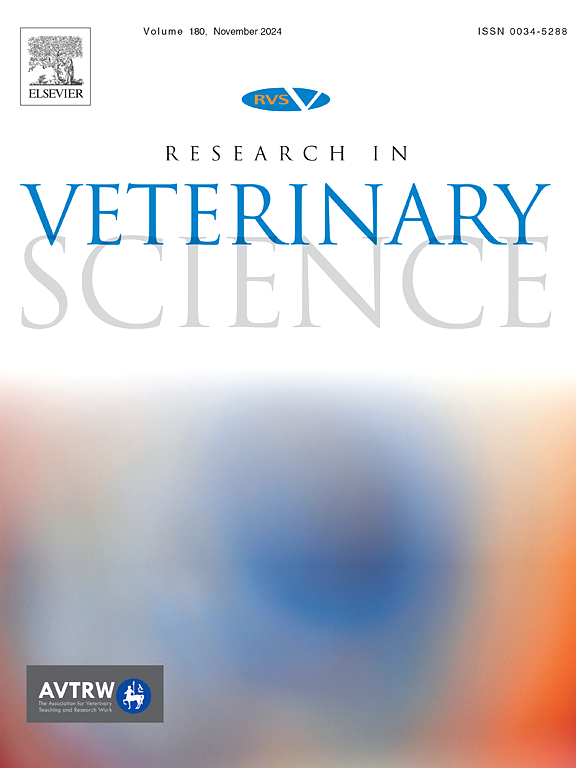基于机器学习的预测建模,用于绘制巴西东南部人类孢子虫病的风险区域
IF 2.2
3区 农林科学
Q1 VETERINARY SCIENCES
引用次数: 0
摘要
孢子虫病是一种对公共卫生影响越来越大的人畜共患真菌病,需要创新方法来绘制风险区域。本研究应用机器学习技术、人工神经网络(ANN)和决策树(DT)对巴西米纳斯吉拉斯州康塔姆市的社会人口、流行病学、环境和城市数据进行整合。两种模型均表现出较高的预测能力,具有互补性:人工神经网络在类别区分方面表现突出(平均准确率为0.9106,AUC为0.939,MSE为0.4040,RMSE为0.6313,R2为0.5955),而DT模型一致性较好,误差较小(平均准确率为0.9185,AUC为0.9147,MSE为0.0695,RMSE为0.2625,R2为0.6285)。DT还确定了关键风险因素,如公园、广场、足球场、阳性猫、卫生设施和郊区群集的存在。空间分析加强了这一发现,对比图显示实际数据和预测数据之间的高度相似性:在884个普查部门中,221个(25%)记录了阳性人间病例,而人工神经网络预测的是219个(24.78%)。这些结果突出了用于优化孢子虫病监测和控制的技术的潜力,丰富了对其流行病学的理解,并为制定更有效的控制策略提供了强有力的工具,促进了公共卫生和动物福利的重大进展。本文章由计算机程序翻译,如有差异,请以英文原文为准。
Predictive modeling based on machine learning for mapping risk areas of human sporotrichosis in southeastern Brazil
Sporotrichosis, a zoonotic mycosis with a growing public health impact, requires innovative methods to map risk areas. This study applied machine learning techniques, Artificial Neural Networks (ANN), and Decision Trees (DT) to integrate sociodemographic, epidemiological, environmental, and urban data from Contagem, Minas Gerais, Brazil. Both models exhibited high predictive capacity, with complementary performances: the ANN stood out in class discrimination (mean accuracy of 0.9106, AUC of 0.939, MSE of 0.4040, RMSE of 0.6313, R2 of 0.5955), while the DT demonstrated greater consistency and lower errors (mean accuracy of 0.9185, AUC of 0.9147, MSE of 0.0695, RMSE of 0.2625, R2 of 0.6285). The DT also identified key risk factors, such as the presence of parks, squares, soccer fields, positive cats, health facilities, and suburban clusters. Spatial analysis reinforced the findings, with the comparative map showing high similarity between actual and predicted data: of the 884 census sectors, 221 (25 %) recorded positive human cases against 219 (24.78 %) predicted by the ANN. These results highlight the potential of the techniques used to optimize the monitoring and control of sporotrichosis, enriching the understanding of its epidemiology and providing robust instruments for developing more effective control strategies, promoting significant advances in public health and animal welfare.
求助全文
通过发布文献求助,成功后即可免费获取论文全文。
去求助
来源期刊

Research in veterinary science
农林科学-兽医学
CiteScore
4.40
自引率
4.20%
发文量
312
审稿时长
75 days
期刊介绍:
Research in Veterinary Science is an International multi-disciplinary journal publishing original articles, reviews and short communications of a high scientific and ethical standard in all aspects of veterinary and biomedical research.
The primary aim of the journal is to inform veterinary and biomedical scientists of significant advances in veterinary and related research through prompt publication and dissemination. Secondly, the journal aims to provide a general multi-disciplinary forum for discussion and debate of news and issues concerning veterinary science. Thirdly, to promote the dissemination of knowledge to a broader range of professions, globally.
High quality papers on all species of animals are considered, particularly those considered to be of high scientific importance and originality, and with interdisciplinary interest. The journal encourages papers providing results that have clear implications for understanding disease pathogenesis and for the development of control measures or treatments, as well as those dealing with a comparative biomedical approach, which represents a substantial improvement to animal and human health.
Studies without a robust scientific hypothesis or that are preliminary, or of weak originality, as well as negative results, are not appropriate for the journal. Furthermore, observational approaches, case studies or field reports lacking an advancement in general knowledge do not fall within the scope of the journal.
 求助内容:
求助内容: 应助结果提醒方式:
应助结果提醒方式:


